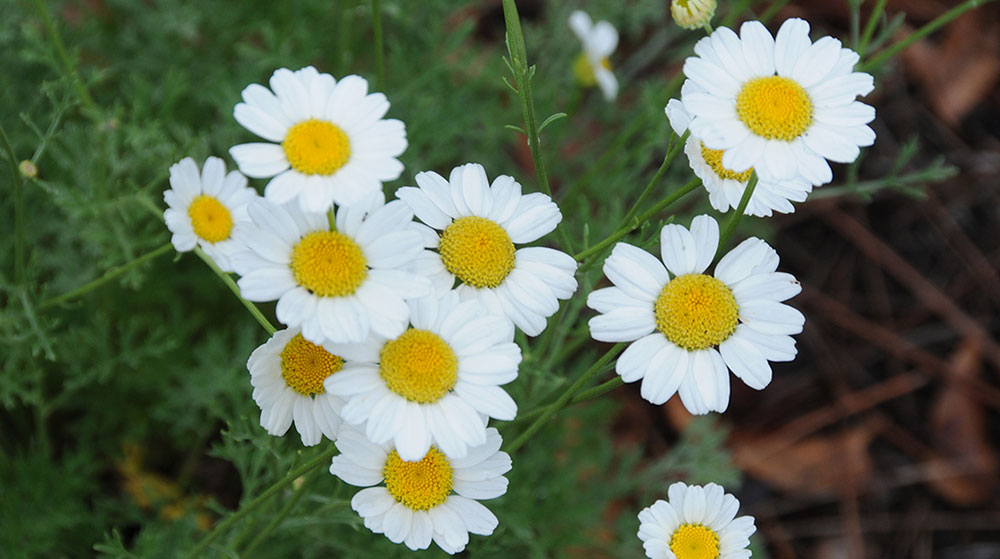Pyrethrum Daisy Vol. 2, No. 10
Related News
October 1, 2013
September 10, 2013
June 24, 2013
June 20, 2013

Order: Asterales
Family: Asteraceae
These little white flowers are the source of one of the first insecticides ever used by mankind. Persian powder was used to control lice and fleas more than 150 years ago, and some sources indicate that pyrethrum has been used for more than 2000 years. Pyrethrum is a botanical insecticide that is extracted from the dried flowers of the pyrethrum daisy. Actually, pyrethrum consists of six different chemical components: pyrethrin I, pyrethrin II, cinerin I, cinerin II, jasmolin I and jasmolin II, and these are collectively referred to as pyrethrins or pyrethrum. The living flowers do not harm bees and other insects that visit them because the active components are bound in the seeds until they are dried and extracted.
Because of its low mammalian toxicity and broad-spectrum insect activity, pyrethrum continues to be a popular insecticide even today, especially for organic crops, but it does have limitations. Although it provides rapid knock down control of many types of insects, pyrethrum provides no residual control and insects sometimes recover. The addition of synergists, such as piperonyl butoxide (PBO), significantly improves its effectiveness, but “synergized pyrethrum” is not organic, and its efficacy and persistence still falls far short of that of its modern counterparts. Modern synthetic pyrethroids, such as permethrin and bifenthrin, which were developed by chemically modeling and modifying the molecules of the natural pyrethrum, are much more effective and longer lasting. However, the worldwide market for “natural py” is still quite large. The US continues to be the largest consumer of pyrethrum, but Australia, Ecuador, East Africa, and China are the main producers of pyrethrum daisies.
The flowers shown in the photo are growing in the MSU Lyle Entomology Building pollinator garden. If you would like to try growing these unusual perennial plants in your landscape, seeds for this species, as well as the more colorful painted daisy, Chrysanthemum coccineum, which also produces pyrethrum, are available commercially.
Let others know about the Bug’s Eye View Newsletter: If you know someone who might enjoy receiving the Bug’s Eye View Newsletter, please share. They can easily subscribe by clicking on the sign up link shown below.
Blake Layton, Extension Entomology Specialist, Mississippi State University Extension Service.
The information given here is for educational purposes only. Always read and follow current label directions. Specific commercial products are mentioned as examples only and reference to specific products or trade names is made with the understanding that no discrimination is intended to other products that may also be suitable and appropriately labeled.